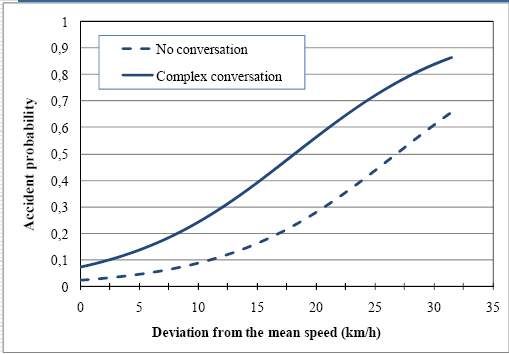
The objective of this research is the analysis of the effect of conversation, eating and smoking on driver behaviour and on road safety in rural roads. For that purpose, a driving simulator experiment was carried out, in which participants were asked to talk, eat or smoke while driving on a rural road during daytime. Driver behaviour was then analysed on the basis of three variables, namely speed, reaction time and distance from the central axis of the lane. Driver safety was analysed on the basis of accident probability. Especially as regards talking, two types of conversation were examined, a ‘simple’ one and a ‘complex one’. Moreover, participants were asked to consume a light snack and smoke a cigarette at given points along the selected route. Unexpected incidents were also scheduled to occur at fixed points along the route. Driver speed, reaction time and distance from the central axis of the lane were modelled by means of log-normal regression models, whereas accident probability was modelled by means of binary logistic regression models. The results suggest that ‘simple’ conversation, ‘complex’ conversation, eating and smoking are all associated with decreased speeds. Moreover, ‘complex’ conversations were systematically associated with increased distance from the central axis of the lane, significantly increased reaction times at unexpected incidents and increased accident risk. Overall, ‘simple’ conversation, eating and smoking were not found to result in increased reaction times and increased accident probability, indicating that drivers may successfully compensate for these distraction factors by reducing their speed. On the contrary, ‘complex’ conversation was found to lead to significantly higher accident probability. It can be said that the decrease in speed and the increase in distance from the central axis of the lane during the ‘complex’ conversations, which might be considered beneficial for road safety under certain conditions, cannot counter-balance the driver’s distraction, leading to increased reaction time, and eventually increased accident probability, especially when unexpected incidents occur.
| ID | pc117 |
| Presentation | |
| Full Text | |
| Tags | driver behaviour, driver distraction, driving simulator, statistical modelling |













